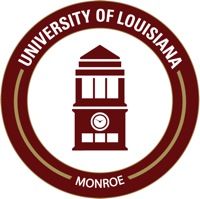Below is a summary of the abstract you submitted. Presenting author(s) is shown in bold.
If any changes need to be made, you can modify the abstract or change the authors.
You can also download a .docx version of this abstract.
If there are any problems, please email Dan at dar78@pitt.edu and he'll take care of them!
This abstract was last modified on March 21, 2023 at 5:55 a.m..

Arti and MossRose were isolated via an enrichment protocol using the Gordonia terrae and Gordonia rubripertincta hosts, respectively*. The Arti genome is 66,539 base pairs in length, has a 3’ 10-base overhang, and has a GC content of 66.0%. As expected, a nucleotide BLAST of its full genome indicated its closest matches as other members of the CR2 cluster of Gordonia phages (e.g., GrootJr, NovumRegina, Wheezy, NatB6,). Of the 91 preliminary open reading frames identified in its genome, 32 code for functional gene products while the remaining 59 code for hypothetical proteins of no known function. The Arti genome is read from both the + and – strands, with long stretches of forward genes (GP1-51) followed by an extended stretch of reverse genes (GP52-76), before returning to the plus strand for the remainder of the genome. With the exception of GP1 (small terminase subunit) and GP19 (lysin B), the first twenty-two gene products represent hypothetical proteins. Similarly, all but five of the gene products beyond GP60 also code for proteins of no known function. Interestingly, twenty of the Arti gene products belong to the same Pham as the singleton Rhodococcus phage ChewyVIII. These include the scaffolding, capsid decoration, major capsid, head-to-tail adapter, major tail, tail assembly chaperone, tape measure, minor tail, DNA primase/polymerase, RuvC-like resolvase, DNA polymerase III, RecA-like DNA recombinase, Cas4 family exonuclease, and helicase proteins. This is not surprising as some of the closest BLASTn results for Rhodococcus phage ChewyVIII are phages isolated on Gordonia host species. The MossRose genome is circularly permuted, is 61,072 base pairs in length, and has a GC content of 69.0%. As expected, a nucleotide BLAST of its full genome indicated its closest matches as other members of the DR cluster of Gordonia phages (e.g., CaiB, AnarQue, CloverMinnie, Wooper). Of the 85 preliminary open reading frames identified in its genome, 31 code for functional gene products while the remaining 52 code for hypothetical proteins of no known function. The MossRose genome is read from both the + and – strands, with multiple switches from the forward to the reverse direction throughout the genome.
*Gordonia phages Arti and MossRose were adopted from the SEA PHAGES Genome Exchange and were isolated by students from Kansas State University (Kansas) and Northern State University (South Dakota), respectively.
